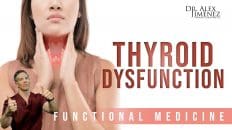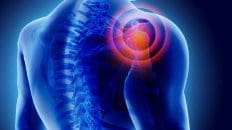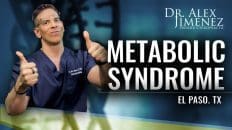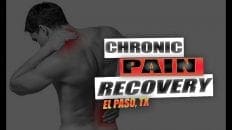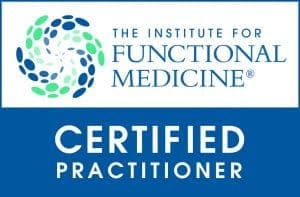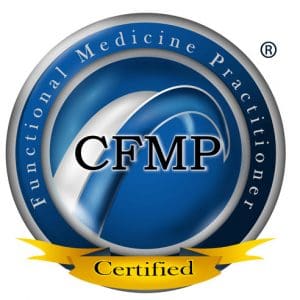Neuropathy can be a very painful condition to live with. Unfortunately, many individuals are told that their nerves can not be repaired or that they are too far damaged. However, many research studies would disagree! There is a way to help repair nerves and get rid of neuropathy pain, not just mask the symptoms. Neuropathy can affect everyone differently as the symptoms they experience vary. For some, the symptoms include burning or pins and needle sensation, whereas others experience numbness. One of the best things to do for neuropathy is to start getting treatment as soon as these symptoms occur. Although they may not be debilitating at first, the longer you go without help from a doctor who is properly educated, the worse the condition can become. Neuropathy can turn everyday tasks into chores you dread. The purpose of treating this condition without drugs is to get you feeling healthy again with no pain so you are able to do the simple tasks again that were once taken away. If you have been told before that there is no hope for your neuropathy pain, your nerve endings could still have hope. You could be playing with your kids or grandkids rather than sitting in a chair, watching them play from afar. Neuropathy does not have to be a forever condition that continues to worsen. Getting treatment before you get to this point or before you begin to lose your balance can make all the difference in the world. Dr. Alexander Jimenez is a highly skilled doctor of chiropractic who understands that neuropathy is not a lost cause of a diagnosis. Dr. Jimenez will work with each patient to develop a one on one treatment plan to restore nerve function without the use of harsh prescriptions! – Kenna Vaughn, Senior Health Coach
[00:00:18] Basically, the body’s nervous system is made up of two parts, the central nervous system, which includes the brain and the spinal cord and the peripheral nervous system, which are the connecting nerves running from the brain and spinal cord to the rest of the body, including your hands and feet. If you think of healthy nerve endings like this dandelion. The nerve endings pictured here at the end of the stock are pretty full and complete, much like your nerve endings were before your symptoms began. However, as your condition gets worse, nerve endings can deteriorate, causing a host of annoying, painful and sometimes debilitating symptoms. And if you’re like many neuropathy patients, when your doctor initially diagnosed your condition, they may have told you that your nerve endings were dead or too far gone for treatment. However, we find that more often than not, that’s just not the case.
[00:01:13] Are you or someone, you know, suffering with numbness, burning, tingling pins and needles, cramping or sharp pain in your hands or feet, maybe even balance problems?
[00:01:24] It’s called peripheral neuropathy and over 22 million Americans suffer with this debilitating condition. Hi, I’m Dr. Valerie Monteiro. I’m a leading expert on peripheral neuropathy or more importantly, on recovering from neuropathy. For the past 10 years, we’ve helped thousands of patients regain their freedom from peripheral neuropathy. But first, let’s start with a few facts. What is peripheral neuropathy? Peripheral neuropathy is a condition resulting in damage to the nerves running to your feet and legs or your hands and arms. At first, the symptoms may start off very mild. For instance, you might have a very slight tingling in your feet or just a mild numbness. But with time, these symptoms will worsen. The numbness may become so severe that you can’t feel the floor or the gas pedal in your car. Some people develop severe burning in their feet and must soak them in a tub of ice. Other people can experience sharp lightning bolt pain going into their calves or arms or even cramping in the muscles. Worse yet, many people will develop muscle weakness and balance problems, often resulting in serious falls and injuries.
[00:02:34] As with many disorders, early detection and treatment of neuropathy is very important. So just what are the warning signs of peripheral neuropathy? Symptoms typically occur over the areas of the body that are covered by socks or gloves, such as your hands, feet and legs, which is why the condition is often referred to as the stocking and glove disorder. Symptoms or warning signs of peripheral neuropathy can include numbness, tingling, or a pins and needles sensation burning pain that can sometimes be so severe it feels like your feet are on fire. Sharp or stabbing pain, causing an electric shock like sensation deep or a dull achy pain, swelling in the arms and legs, cramping or restless legs. Extreme sensitivity to fabric touching your skin, even discomfort from bed sheets at night, which can often result in sleeplessness. You may also find that you’re constantly dropping things or experience an inability to do things with your hands that were once easy. And besides being generally uncomfortable to downright painful peripheral neuropathy, symptoms can also lead to difficulty walking and an overall lack of balance and coordination which can result in falls. Patients with peripheral neuropathy are 15 times more likely to be at risk of a serious fall. As far as the causes of peripheral neuropathy, those can vary. However, research suggests that as many as two thirds of all people suffering from diabetes will develop peripheral neuropathy. Neuropathy can also commonly develop as a result of using statin or cholesterol lowering medications, blood pressure medications and is a common side effect for people undergoing chemotherapy or radiation therapy. Additionally, neuropathy can result from spinal related conditions like stenosis, herniated discs and sciatica. And oftentimes the condition is misdiagnosed as plantar fasciitis, Mortons neuroma and restless leg syndrome. We utilize a gentle, proven approach to treating the property without surgery, NON-invasively and completely drug free.
[00:04:34] A closer look illustrates how the use of laser therapy and infrared diodes can help heal the body. At the basic level, all cells in the body have a miniature power plant within called the mitochondria. This is where our cells energy is produced. The technical term for this energy is called adenosine triphosphate or ATP for short. Patients with neuropathy have decreased blood flow and weaker mitochondria, which causes nerve cells to improperly transmit impulses throughout the body, most commonly in the extremities. Because the mitochondria are very sensitive to light, concentrated laser light therapy stimulates a rapid increase in ATP production in the mitochondria. With this intense increase in energy production, the light frequencies greatly improve blood flow as well as the production of oxygen, nitric oxide , enzymes and other vital elements to help the body’s nerves heal naturally on a cellular level. The result is a cascade of beneficial chemical reactions throughout damaged nerve cells.
[00:05:38] Finally, you may be asking, should I wait? Give us a call today and reserve one of our new patient consultations.
General Disclaimer
Professional Scope of Practice *
The information herein on "Symptoms and Causes of Neuropathy | Video" is not intended to replace a one-on-one relationship with a qualified health care professional or licensed physician and is not medical advice. We encourage you to make healthcare decisions based on your research and partnership with a qualified healthcare professional.
Blog Information & Scope Discussions
Welcome to El Paso's Premier Wellness and Injury Care Clinic & Wellness Blog, where Dr. Alex Jimenez, DC, FNP-C, a Multi-State board-certified Family Practice Nurse Practitioner (FNP-BC) and Chiropractor (DC), presents insights on how our multidisciplinary team is dedicated to holistic healing and personalized care. Our practice aligns with evidence-based treatment protocols inspired by integrative medicine principles, similar to those found on this site and our family practice-based chiromed.com site, focusing on restoring health naturally for patients of all ages.
Our areas of multidisciplinary practice include Wellness & Nutrition, Chronic Pain, Personal Injury, Auto Accident Care, Work Injuries, Back Injury, Low Back Pain, Neck Pain, Migraine Headaches, Sports Injuries, Severe Sciatica, Scoliosis, Complex Herniated Discs, Fibromyalgia, Chronic Pain, Complex Injuries, Stress Management, Functional Medicine Treatments, and in-scope care protocols.
Our information scope is multidisciplinary, focusing on musculoskeletal and physical medicine, wellness, contributing etiological viscerosomatic disturbances within clinical presentations, associated somato-visceral reflex clinical dynamics, subluxation complexes, sensitive health issues, and functional medicine articles, topics, and discussions.
We provide and present clinical collaboration with specialists from various disciplines. Each specialist is governed by their professional scope of practice and their jurisdiction of licensure. We use functional health & wellness protocols to treat and support care for musculoskeletal injuries or disorders.
Our videos, posts, topics, and insights address clinical matters and issues that are directly or indirectly related to our clinical scope of practice.
Our office has made a reasonable effort to provide supportive citations and has identified relevant research studies that support our posts. We provide copies of supporting research studies upon request to regulatory boards and the public.
We understand that we cover matters that require an additional explanation of how they may assist in a particular care plan or treatment protocol; therefore, to discuss the subject matter above further, please feel free to ask Dr. Alex Jimenez, DC, APRN, FNP-BC, or contact us at 915-850-0900.
We are here to help you and your family.
Blessings
Dr. Alex Jimenez DC, MSACP, APRN, FNP-BC*, CCST, IFMCP, CFMP, ATN
email: coach@elpasofunctionalmedicine.com
Multidisciplinary Licensing & Board Certifications:
Licensed as a Doctor of Chiropractic (DC) in Texas & New Mexico*
Texas DC License #: TX5807, Verified: TX5807
New Mexico DC License #: NM-DC2182, Verified: NM-DC2182
Multi-State Advanced Practice Registered Nurse (APRN*) in Texas & Multistate
Multistate Compact RN License by Endorsement (42 States)
Texas APRN License #: 1191402, Verified: 1191402 *
Florida APRN License #: 11043890, Verified: APRN11043890 *
* Prescriptive Authority Authorized
ANCC FNP-BC: Board Certified Nurse Practitioner*
Compact Status: Multi-State License: Authorized to Practice in 40 States*
Graduate with Honors: ICHS: MSN-FNP (Family Nurse Practitioner Program)
Degree Granted. Master's in Family Practice MSN Diploma (Cum Laude)
Dr. Alex Jimenez, DC, APRN, FNP-BC*, CFMP, IFMCP, ATN, CCST
My Digital Business Card
RN: Registered Nurse
APRNP: Advanced Practice Registered Nurse
FNP: Family Practice Specialization
DC: Doctor of Chiropractic
CFMP: Certified Functional Medicine Provider
MSN-FNP: Master of Science in Family Practice Medicine
MSACP: Master of Science in Advanced Clinical Practice
IFMCP: Institute of Functional Medicine
CCST: Certified Chiropractic Spinal Trauma
ATN: Advanced Translational Neutrogenomics









